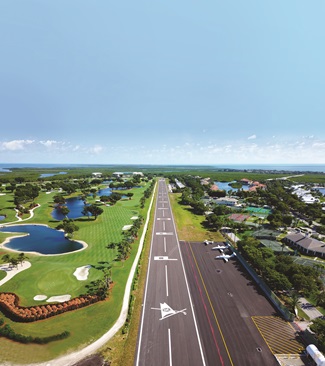Alex Krause, who handles regional Cessna sales and marketing for Sugar Grove, Ill.-based JA Air Center, was inspired by AOPA’s 2012 research on flying clubs. So inspired, in fact, that he’s forming the JA Aero Club, based strongly on that research and his own.
Among the club’s survey findings, the biggest reasons for joining a club are reduced flying costs and diversity of aircraft. Aircraft favored by those surveyed included the Cessna 340, the Covalis TTx, and the Cessna 172 Skyhawk.
The club will be based at Aurora Municipal Airport. “Our goal is to facilitate future members in creating a self-sustained flying organization comprised of top notch general aviation aircraft for all levels of pilots; from newly certificated to the seasoned veteran,” he said.
Krause said that he’s building the membership to buy a turbodiesel Cessna 182, saying it’s the perfect club aircraft for several reasons. “Mainly, just about anyone can fly it. The insurance is very reasonable as it’s proven, for almost 60 years, to be an extremely safe aircraft,” he said. “The aircraft offers a good balance between utility, speed, and ease of operation, and has a less-demanding maintenance schedule and recurring inspections.”
The current mailing list for the club is 100, which was whittled down from 300 eight months ago, said Krause. “About 80 or so have attended the focus groups, and we’ve been advertising through the flight school and online, so I add a couple names to my list every month,” he said.
“I have a good mix of [aircraft] owners and club level guys. We want to start with two or three 182s with up to five owners who can offset their costs by leasing to us,” he said. “Three to four owners is a sweet spot in order to have members use the aircraft. We already have a very successful charter business and flight school, so all management of the aircraft is pre-existing.”
The majority of interested members are current JA customers, said Krause. “We’ve also sent out targeted mailers in our area and hosted a Cessna-sponsored open house to build interest outside our current customer base,” he said. “To date, we’ve held 10 focus group meetings, with attendance averaging between eight and 10 per meeting, where we held surveys and led discussion through a working presentation to garner feedback.”
The ultimate goal in forming the club is to institute a self-sustaining FAR Part 91 program that lowers the overall cost of flying by balancing aircraft use, membership density, aircraft maintenance management, and availability, said Krause. “We also want to offer an above-average, managed-ownership experience that is easily duplicated with higher performance aircraft and the expansion of equity membership,” he said. “All this is made possible for the club by taking advantage of JA’s 25-plus years of aircraft management and charter experience and by utilizing JA’s existing aircraft management and sales staff, Part IV Repair Station (tax free parts), scheduling system, pilots/instructors, dispatch/flight operations department, and highly rated FBO.”
But it will also be like a typical flying club, said Krause. “What we’re pushing is our management and our facilities. We can make it possible to get into a new aircraft for the cost of a legacy 182,” he said.
The list price of a 2013 182 JT-A is $515,000, said Krause. “In a club co-ownership scenario, the cost of a 1/5th share would be $103,000 before taxes, which is roughly the cost of a mid-time engine, round dial, 1980s era 182,” he said. “Considering the less-demanding maintenance schedule and higher time between overhauls, we’ve made projections based on approximately 500 hours a year of use out the aircraft. This equates to around 100 hours of flight time per year per equity member availability, [which is] roughly the yearly national average for recreational pilots.
“By efficiently managing the hours flown by equity/non-equity members and auditing the cash flow, the aircraft may be utilized to its full potential of around 500 hours a year) and direct operating costs are greatly reduced,” said Krause.
The buy-in will be for the ownership level of the club, said Krause. “And they will set how much of the aircraft will be made available to members,” he said. “Club members will have different dues levels, I suspect will be standard along what other clubs do, like a $1,500 buy-in and $60 per month in dues.
JA Aero has a flight school on site that uses Cessna 172s and Skycatchers, said Krause. “But the club aircraft will not be rented out as trainers” unless the owners allow it, he said.
Krause’s advice for those wanting to form their own club is simple: Don’t put cart before the horse. “Talk to those who will be your members. You won’t make everyone happy, and some may get lost in the margins, but you have to make the hard decisions,” he said. “Listen to members on what they want, but don’t give them too many options on how the club is formed. Find a good middle ground for everyone.”


